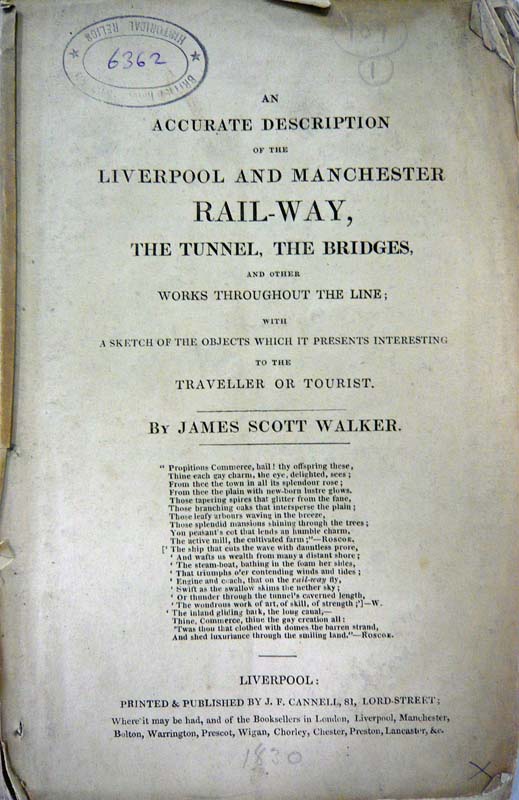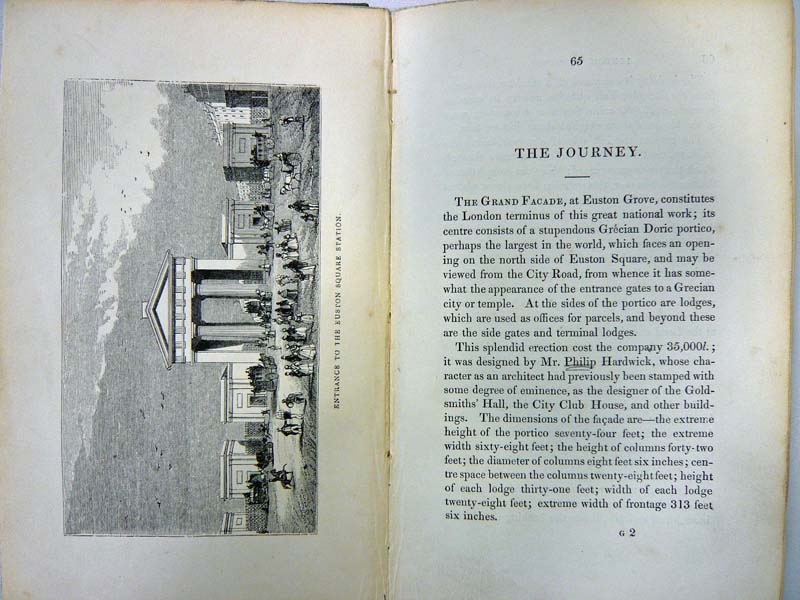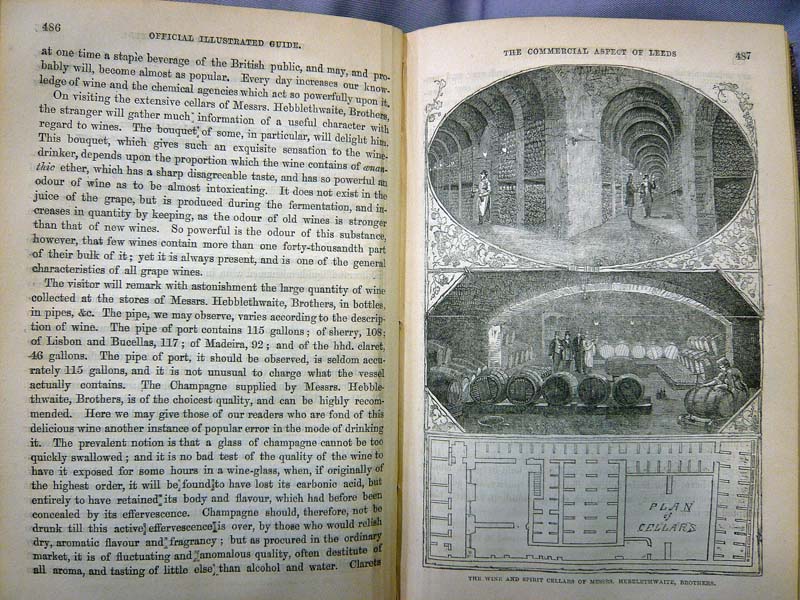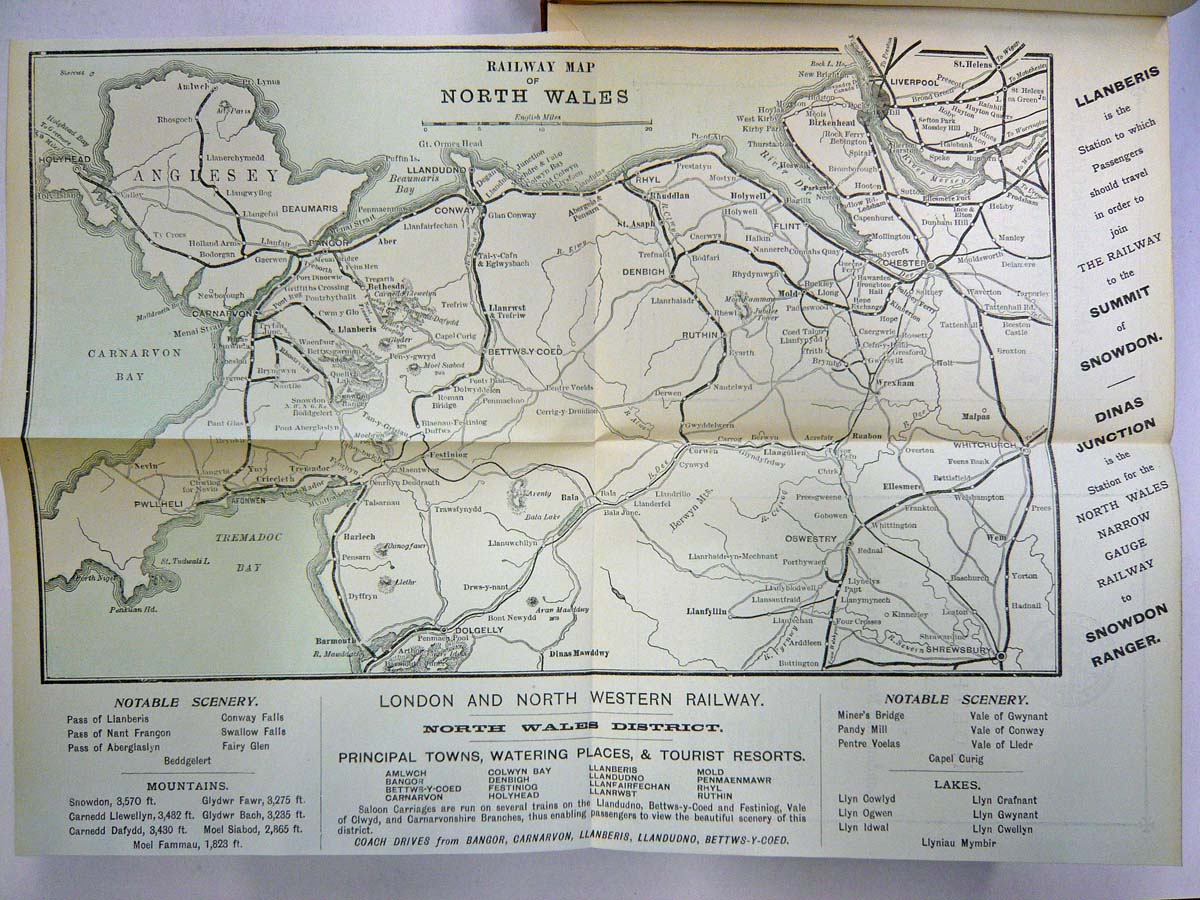BBC2 has recently been showing the second series of Great British Railway Journeys, featuring Michael Portillo’s travels around Britain by rail using an 1860s ‘Bradshaw’s Guide’.
The first series led to a quite a few enquiries here in Search Engine from visitors wanting to see an example of this guide book. Whilst we have many examples of Bradshaw’s Guides within the NRM collection, these are the well-known railway timetables which don’t contain tourist information. Mr Portillo’s guidebook isn’t actually a ‘Bradshaw’s Guide’, but a ‘Bradshaw’s Handbook for Tourists in Great Britain & Ireland’, published in four parts. Copies of this publication are remarkably rare to find, especially as a complete set.
We don’t have an example of the handbook in Search Engine, however my colleague Mary White did a little research on the internet and discovered that there is a copy held by the University of Michigan, which has been digitised and is available free for viewing and download online through the Hathi Trust Digital Library.
Of course Bradshaw was not the only publisher of railway tourist guides and we have many other examples of such guides within the library and archive collections in Search Engine, a few examples of which I’ve included below.
Our earliest guide book is an 1830 guide to the Liverpool and Manchester Railway by James Scott Walker. Slightly unusually for a guide that is aimed at the “traveller or tourist”, it features no illustrations and provides a purely textual description of the line.
As the railway boom expanded, the directors of the railway companies were keen to encourage ways to promote their new lines, and an increasing number of tourist guides were produced as new railways opened across the country. Below is a page from Osborne’s London & Birmingham Railway Guide of 1840, which contains many attractive engravings and maps.
During the 1850-60s, George Measom produced a series of “Official” guides to virtually every major railway company. These were lavishly illustrated and cover not only the usual tourist sights, but also many descriptions and illustrations of industrial and commercial enterprises. Below is a page describing Hebblethwaites Wine Merchants of Leeds in the 1861 Guide to the Great Northern Railway.
Considering the enthusiastic description of their enterprise, one may speculate whether Mr Measom might have enjoyed a good deal of hospitality at Messrs. Hebblethwaite!
It is also interesting to compare these Measom’s guides with the Bradshaw’s Tourist Handbook, as they were published around the same time. The Bradshaw has relatively few illustrations, and is much more in the style of a gazetteer than a tourist guide. I wonder whether the relative scarcity of the Bradshaw nowadays may reflect the relative commercial success of the two publications?
From the 1880s until the early 1900s, another series of Official Railway Company Guides was published by Cassell & Co. These were well illustrated, with increasing use of photographs and many fold out maps, like this map of North Wales from the Official Guide to the London & North Western Railway (1907).
These guides and many others can be viewed in Search Engine, and our library catalogue is available to search online by clicking here.
By the early 1900s, the railway companies were producing an increasing amount of publicity to promote use of the railways for holiday and recreational use. We hold many examples of these right through to the BR period within our archive collections, and I will cover some of these in my next post.
You can read part two here.




Hello- Do you know which (1880s ?)
Bradshaws guide that Michael Portillo used during his north of Scotland trip from Stirling to Wick ? It looked lighter coloured and thinner than the usual brown Bradshaws guide. Thanks